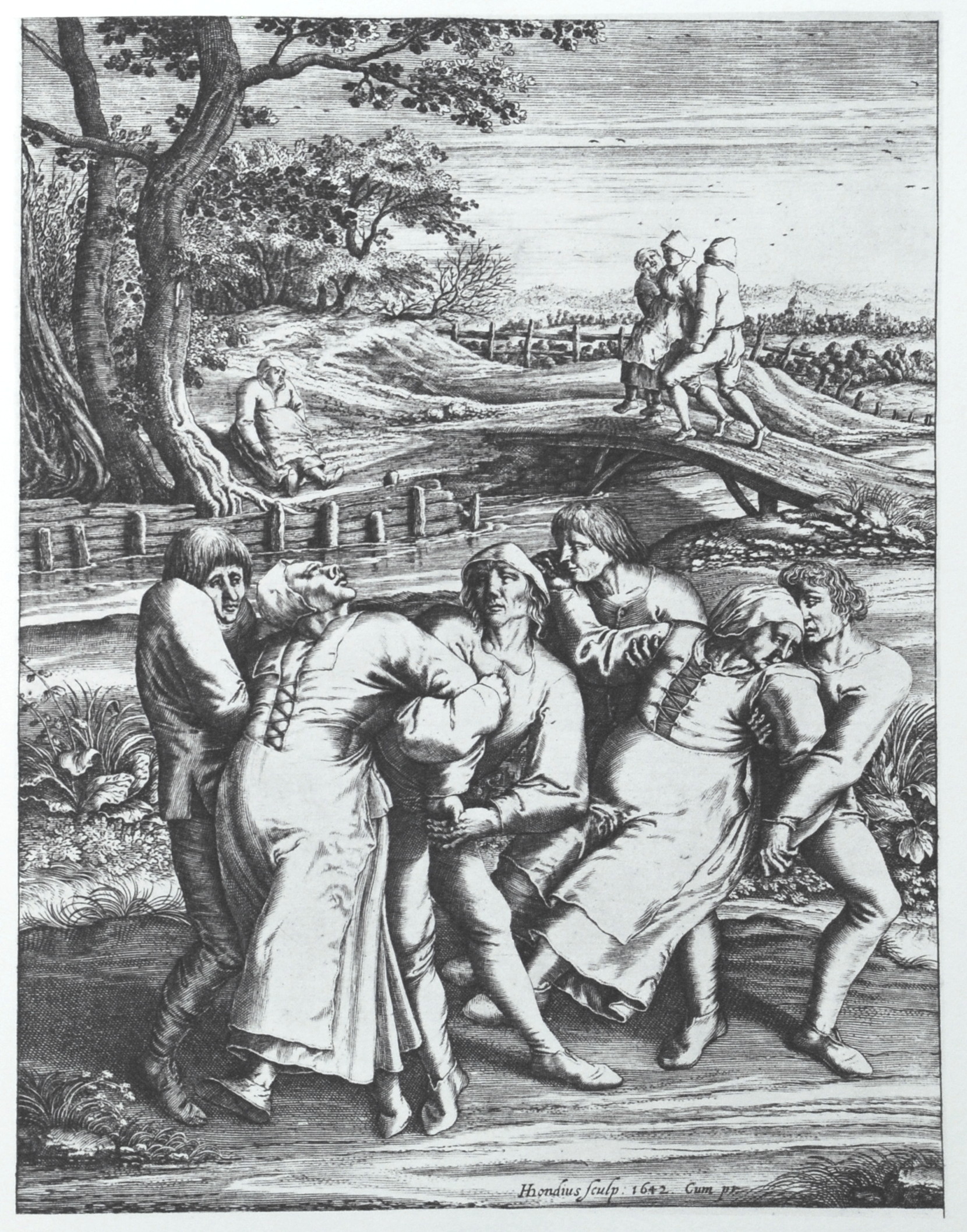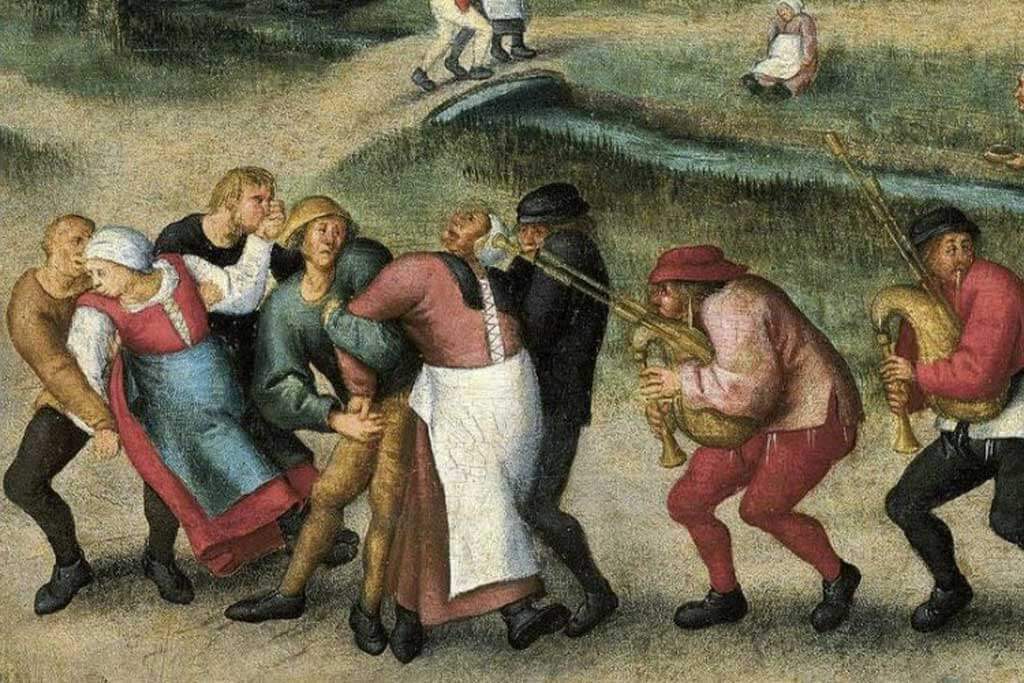In the sweltering summer of 1518, the streets of Strasbourg witnessed one of history’s most bizarre phenomena. A woman named Frau Troffea stepped into the narrow cobblestone street and began to dance. Nothing unusual at first, but she continued dancing for days without rest. Her feet moved tirelessly, her body swayed endlessly, and her face showed signs of anguish and exhaustion.
Within a week, more than 30 people joined this involuntary dance marathon. The numbers swelled dramatically as days passed, and by August, more than 400 citizens were caught in this mysterious dancing frenzy. Many danced until they collapsed from exhaustion, while others continued until their feet were bloodied and their bodies gave out.

Historical depiction of mass dancing mania – Credit: Wikipedia
Local authorities, baffled by this unprecedented situation, initially thought providing more space would help the dancers. They opened guild halls and constructed a wooden stage in the city center. Musicians were brought in, believing that structured dancing might help cure the afflicted. However, this decision proved catastrophic as more people succumbed to the mysterious dancing fever.
The physical toll was devastating on the participants. Many died from heart attacks, strokes, and sheer exhaustion. The dancers moved in a trance-like state, unable to control their movements despite their bodies crying out for rest. Contemporary witnesses described scenes of people begging for help while their legs continued to move against their will.

Artists interpretation of the dancing plague – Credit: France Bucket List
Modern scientists and historians have proposed various theories to explain this peculiar event. Mass hysteria, triggered by extreme psychological stress, stands as a leading explanation. The region had suffered from severe famine and disease outbreaks, creating perfect conditions for a social crisis. Some researchers suggest ergot poisoning from contaminated grain might have played a role.
The social context of medieval Strasbourg adds another layer to understanding this phenomenon. The city was under immense pressure from political tensions, religious conflicts, and economic hardship. The dancing plague might have been a manifestation of collective stress, a physical outlet for psychological trauma that gripped an entire community.
This extraordinary event has left an indelible mark on history, serving as one of the most well-documented cases of mass hysteria. While similar incidents occurred throughout medieval Europe, none reached the scale or intensity of the Strasbourg dancing plague. Today, it stands as a fascinating reminder of how social, psychological, and environmental factors can combine to create extraordinary mass behavioral phenomena.
The dancing plague remains a subject of intense study and speculation. Medical historians continue to debate its causes, while social scientists use it to understand mass behavioral responses to extreme stress. Whether viewed through the lens of science, psychology, or social history, the dancing plague of 1518 continues to captivate and puzzle minds five centuries later.
References:
What Was the Dancing Plague of 1518? | HISTORY – link
The Dancing Plague of 1518 — The Public Domain Review – link
Keep on moving: the bizarre dance epidemic of summer 1518 – link
Categories: Do you know, Historical Mysteries, Mass Hysteria, Medieval History, Unexplained Phenomena
Tags: Dancing Plague, Historical Mysteries, Mass Hysteria, medical history, Medieval History, social phenomena, Strasbourg
Religion: Christianity
Country of Origin: France, Germany
Topic: Historical Mystery
Ethnicity: European

